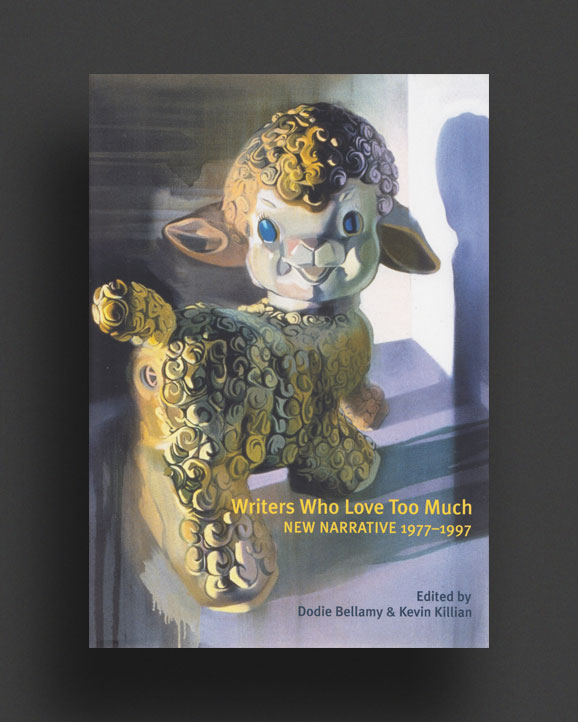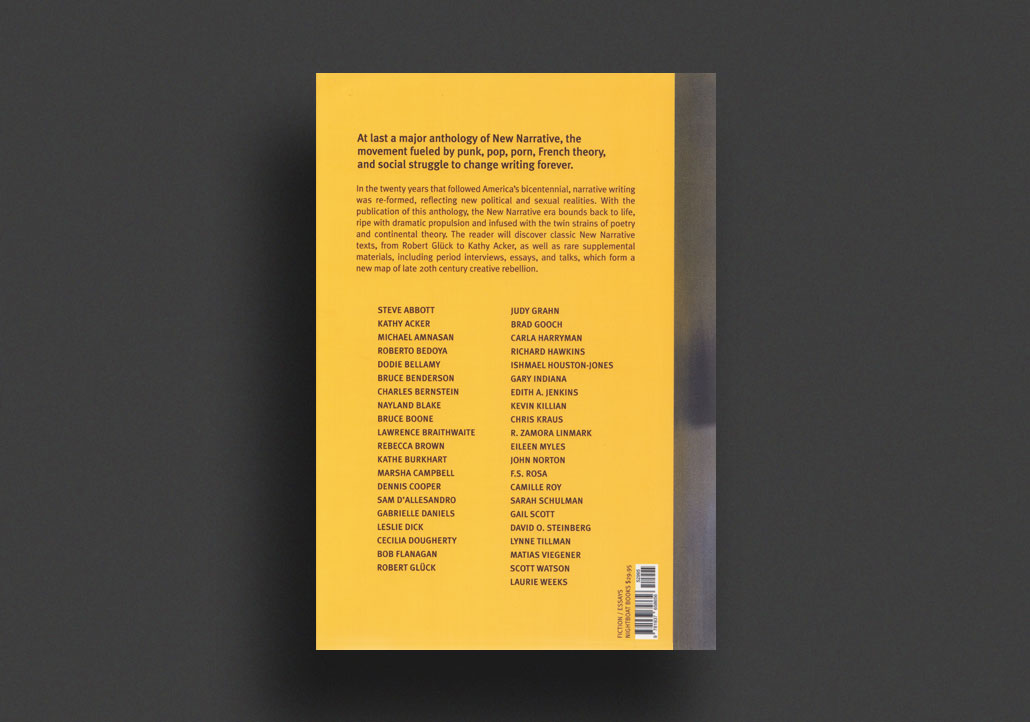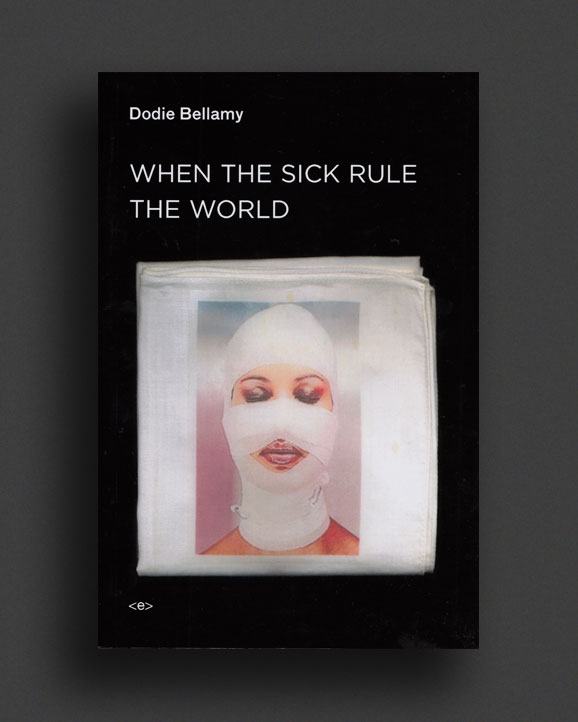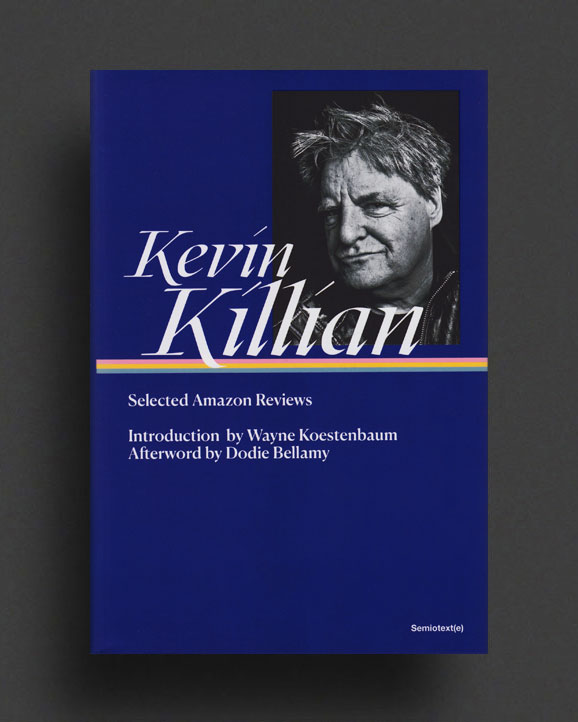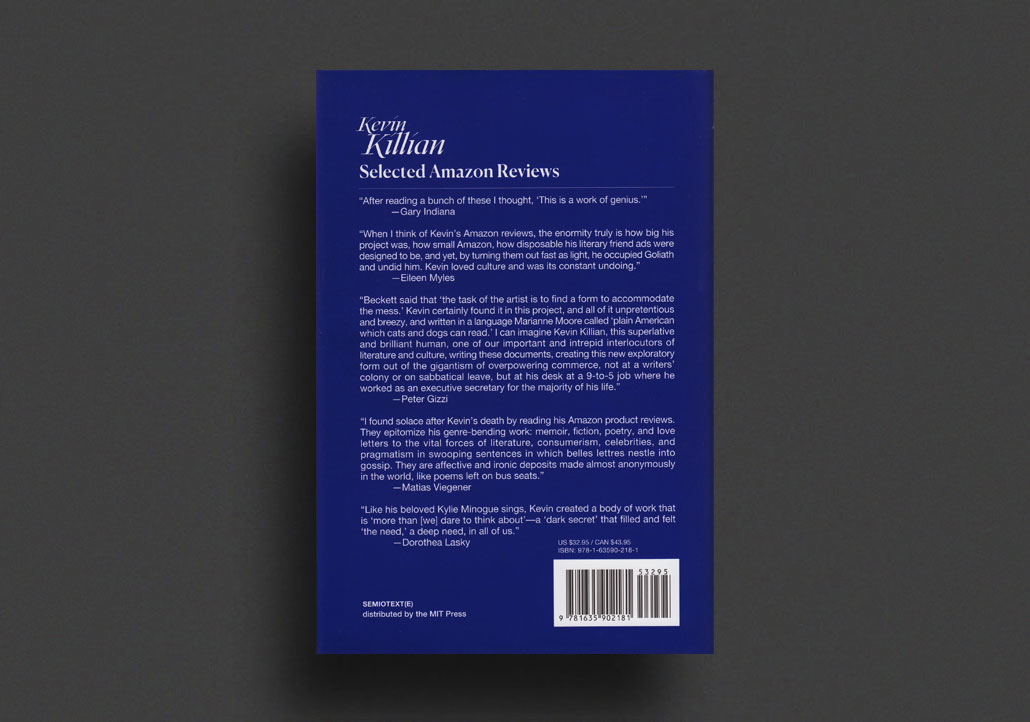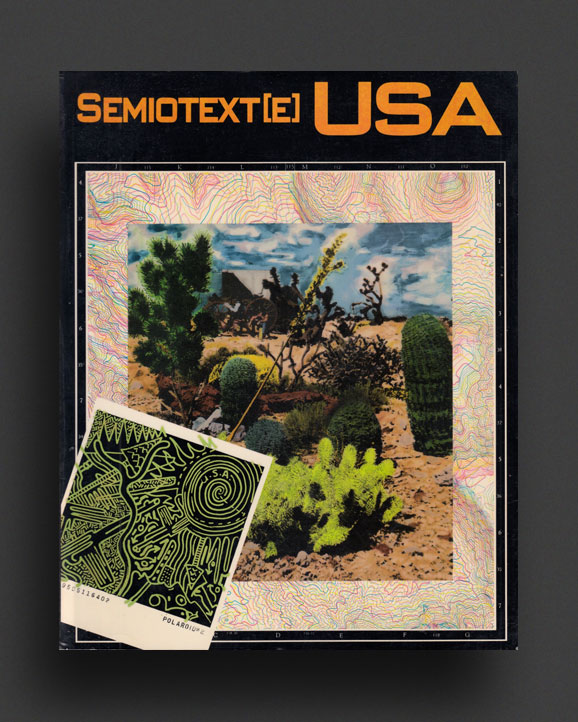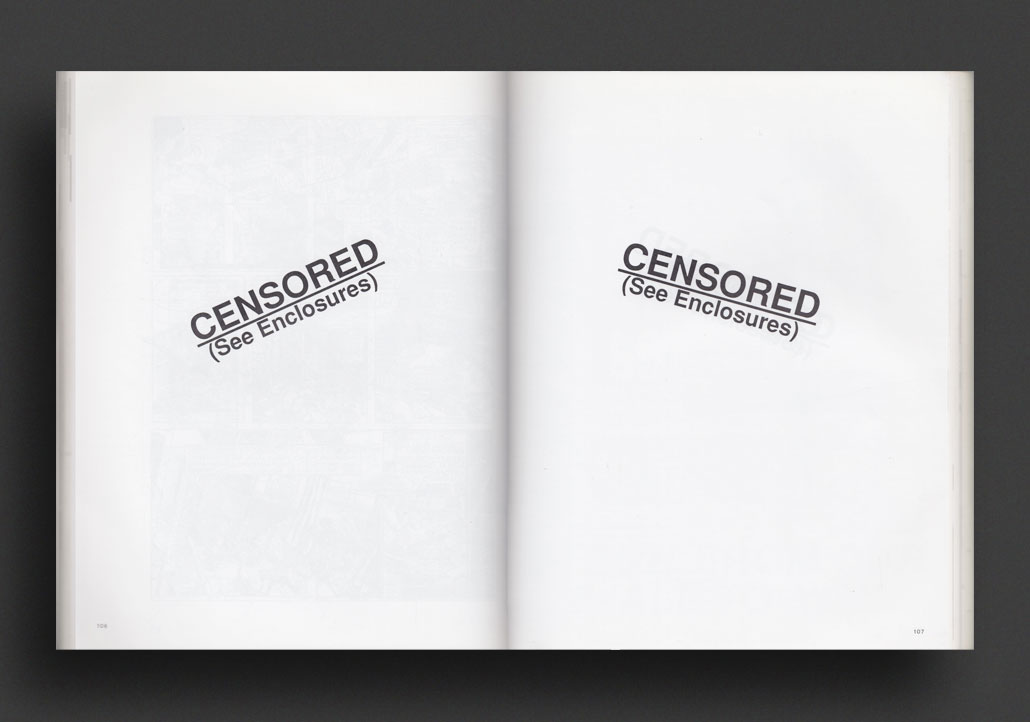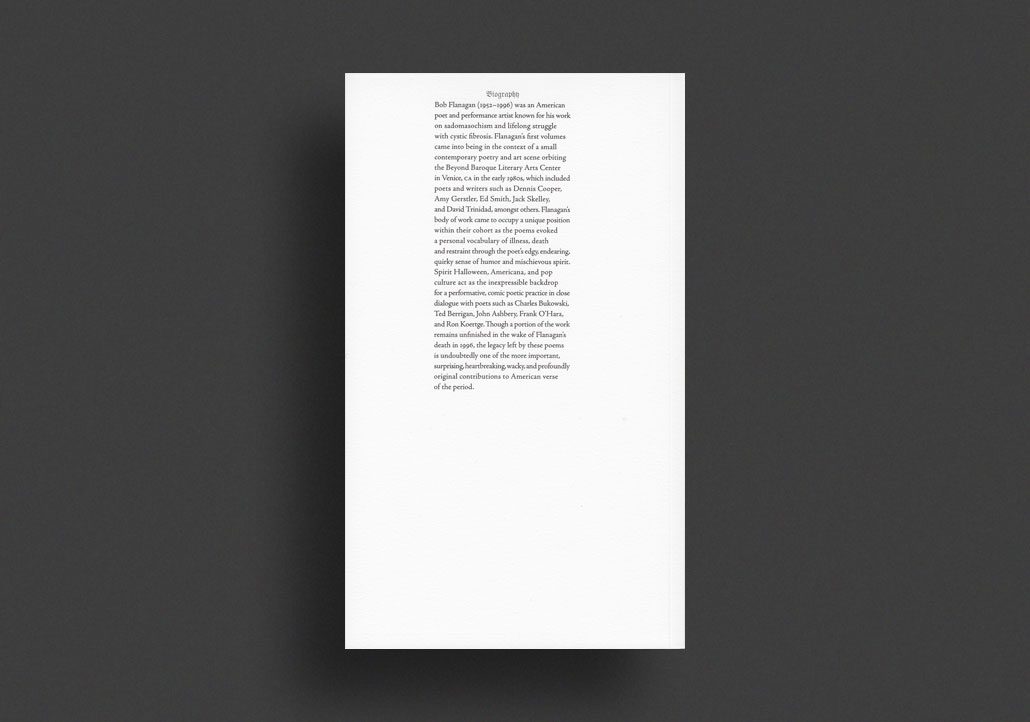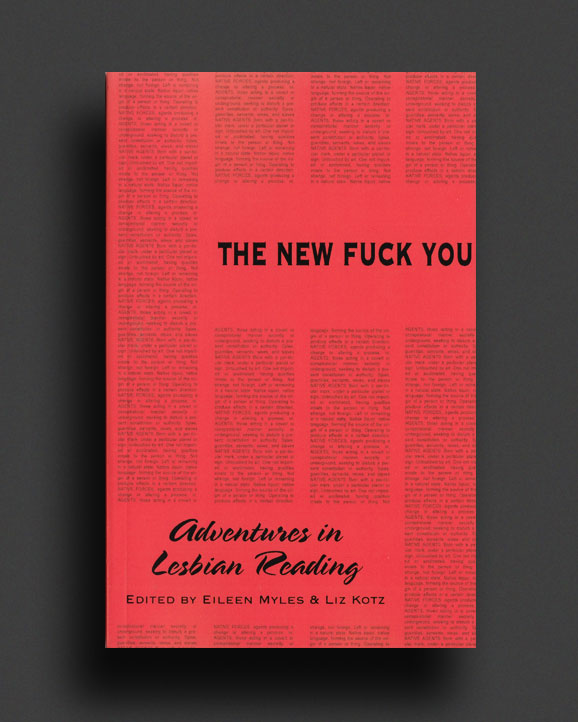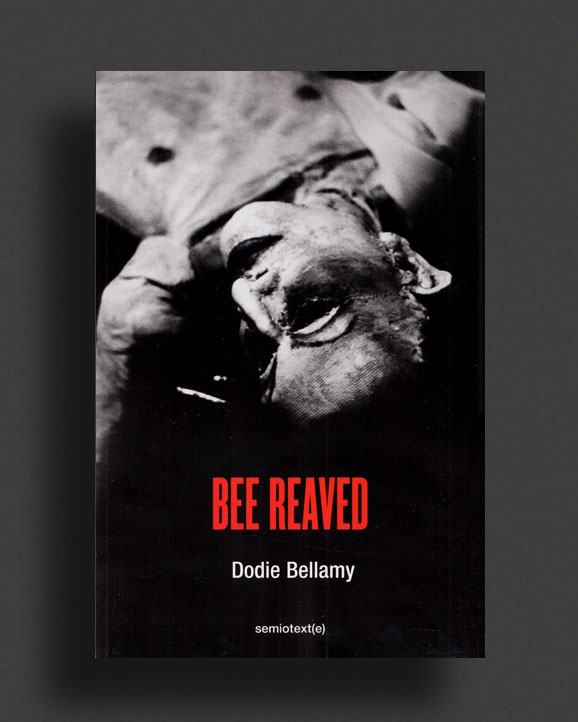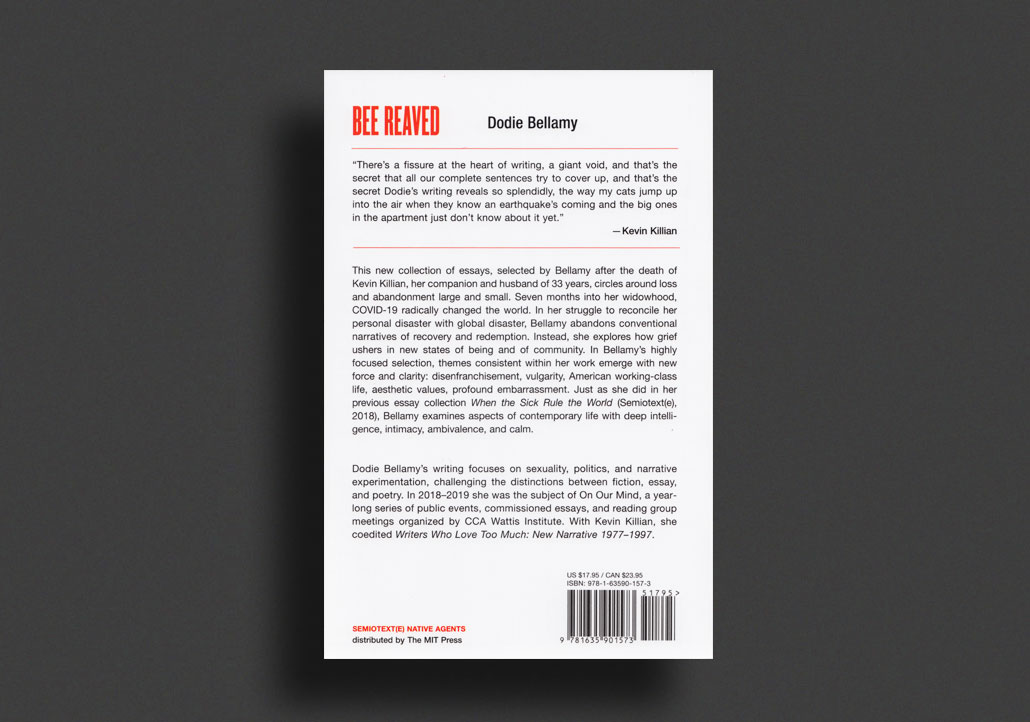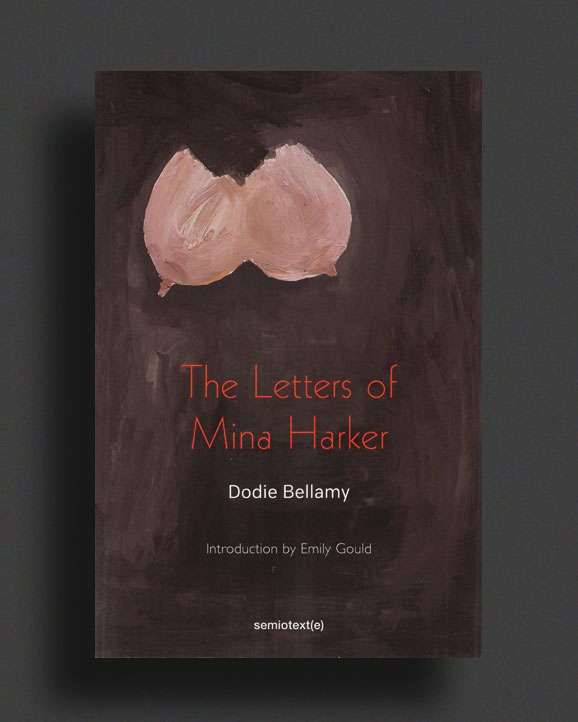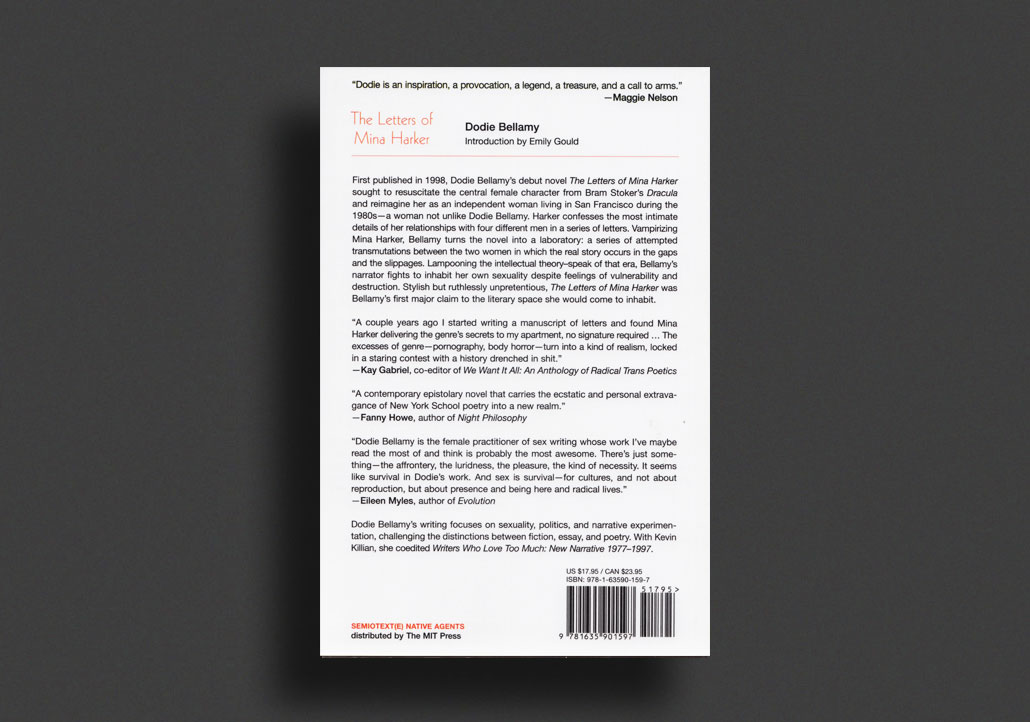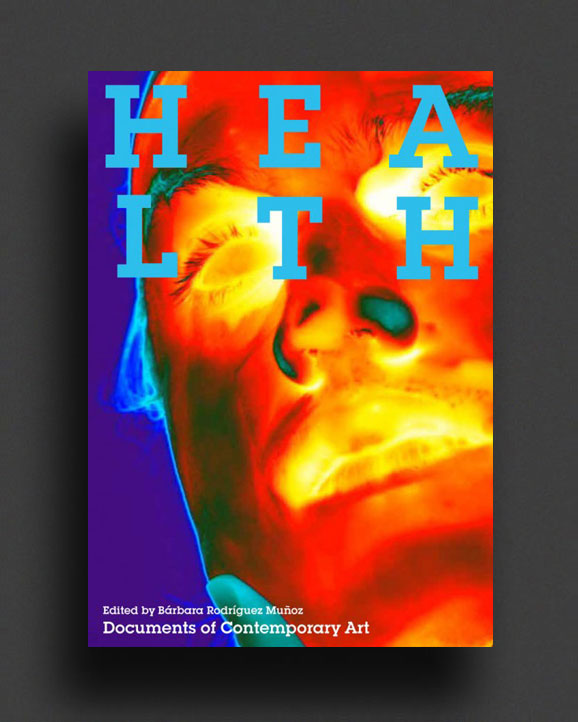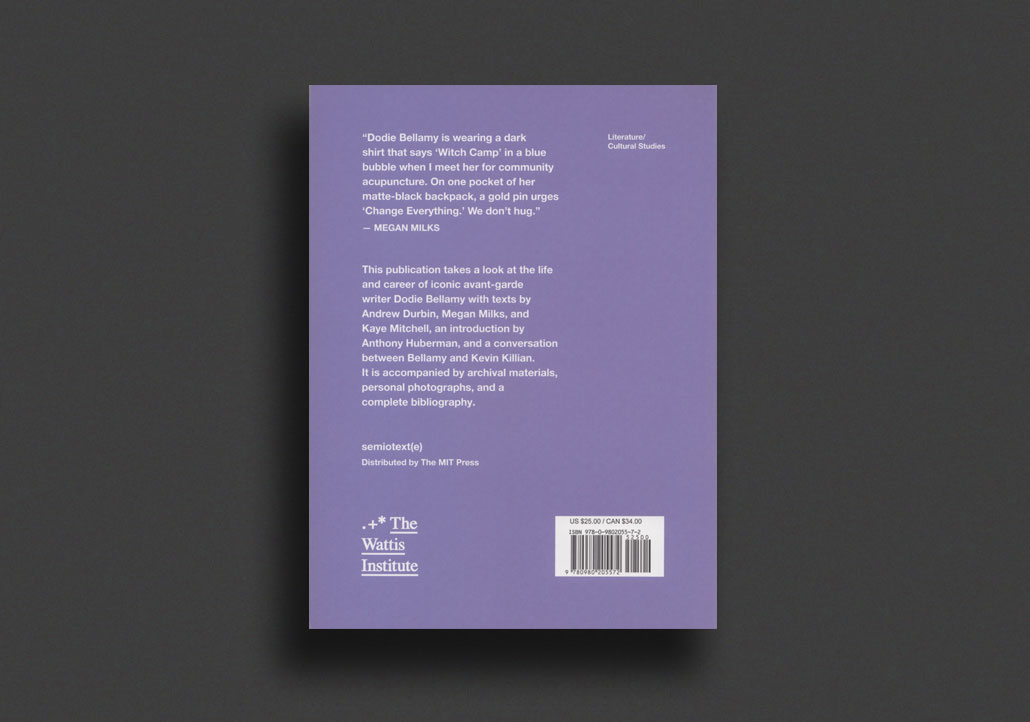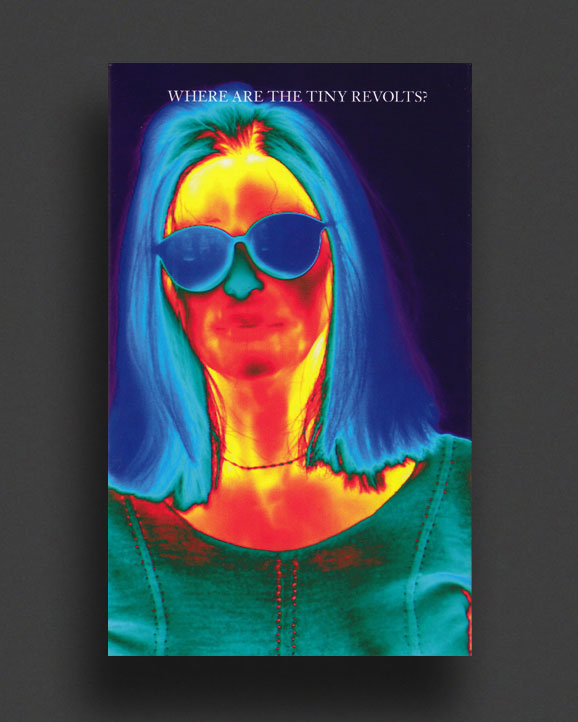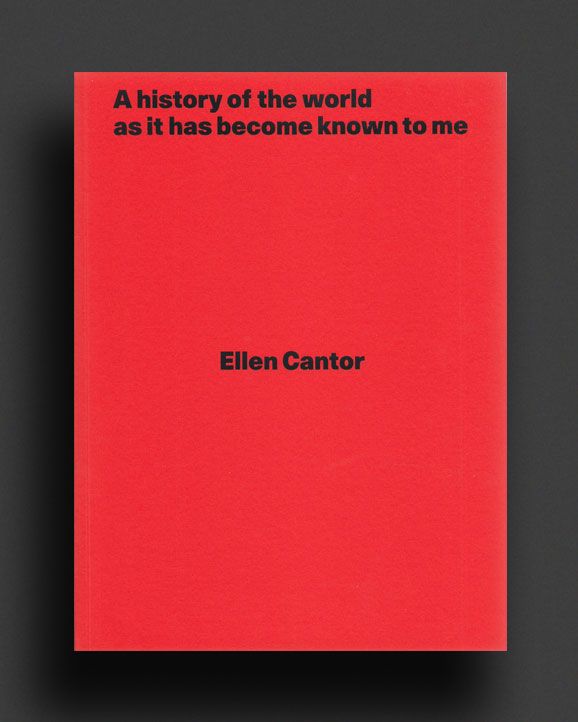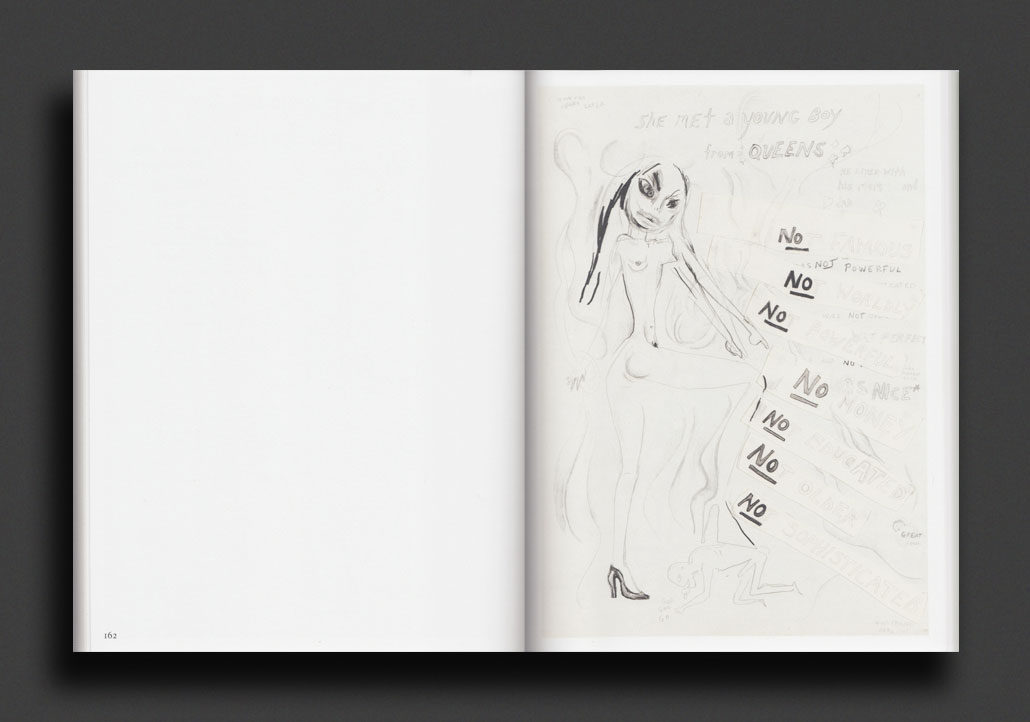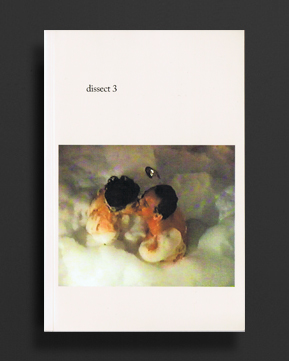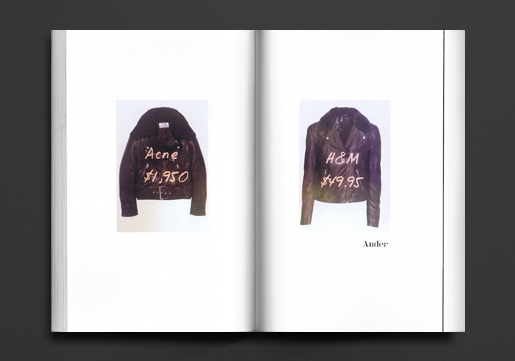(...less)
Introduction by Wayne Koestenbaum
Afterword by Dodie Bellamy
A book-length selection from Kevin Killian's legendary corpus of more than two thousand product reviews posted on Amazon.com.
An enchanting roll of duct tape. Love Actually on Blu-ray Disc. The Toaster Oven Cookbook, The Biography of Stevie Nicks, and an anthology of poets who died of AIDS. In this only book-length selection from his legendary corpus of more than two thousand product reviews posted on Amazon.com, sagacious shopper Kevin Killian holds forth on these household essentials and many, many, many others.
The beloved author of more than a dozen volumes of innovative poetry, fiction, drama, and scholarship, Killian was for decades a charismatic participant in San Francisco's New Narrative writing circle. From 2003–2019, he was also one of Amazon's most prolific reviewers, rising to rarefied “Top 100” and “Hall of Fame” status on the site. Alternately hilarious and heartfelt, Killian's commentaries consider an incredible variety of items, each review a literary escapade hidden in plain sight amongst the retailer's endless pages of user-generated content. Selected Amazon Reviews at last gathers an appropriately wide swath of this material between two covers, revealing the project to be a unified whole and always more than a lark.
Some for “verified purchases,” others for products enjoyed in theory, Killian's reviews draw on the influential strategies of New Narrative, his unrivaled fandom for both elevated and popular culture, and the fine art of fabulation. Many of them are ingeniously funny—flash-fictional riffs on the commodity as talismanic object, written by a cast of personas worthy of Pessoa. And many others are serious, even scholarly—earnest tributes to contemporaries, and to small-press books that may not have received attention elsewhere, offered with exemplary attention. All of Killian's reviews subvert the Amazon platform, queering it to his own play with language, identity, genre, critique.
Killian's prose is a consistent pleasure throughout Selected Amazon Reviews, brimming with wit, lyricism, and true affection. As the Hall of Famer himself reflected on this form-of-his-own-invention shortly before his untimely passing in 2019: “They're reviews of a sort, but they also seem like novels. They're poems. They're essays about life. I get a lot of my kinks out there, on Amazon.”
"Killian's largely five-star reviews of books, movies, poetry, CDs and the occasional object he may or may not have actually purchased [...] are learned, often laugh-out-loud funny, frequently moving, guilelessly enthusiastic and intellectually generous. The biggest laugh is that he conceived of a way to produce a wholly idiosyncratic art project on the ground of corporate real estate. In doing so he subverted the essentially cynical egotism of capitalism and reasserted art as, always and ever, communal."—Melissa Holbrook Pierson, The Washington Post
"And then, quite brilliantly, there are Killian's reviews of sundry consumer products, unrelated to art or culture. (Reader, if you're dithering over the six-hundred-plus pages and the hardback sticker price, these pieces are themselves alone worth the price of admission.)"—Brian Dillon, 4Columns
Kevin Killian (1952–2019) was a San Francisco–based poet, playwright, novelist, biographer, editor, critic, and artist. Highly prolific and radically queer, he published several volumes of poetry and short stories, as well as four novels. He also wrote and produced fifty plays, and with his wife, Dodie Bellamy, coedited Writers Who Love Too Much: New Narrative 1977–1997. In addition to reviewing for Amazon, Killian published criticism in Art in America, Artforum, Artweek, the Brooklyn Rail, BOMB, Framework, and elsewhere. Poet D. A. Powell has called Killian “a dark master of the word … an inviting bridegroom and a voyeur who'll let us play in his fictions until we're spent.”
Wayne Koestenbaum—poet, critic, fiction writer, artist, filmmaker, performer—has published twenty-two books, including Ultramarine, The Cheerful Scapegoat, Figure It Out, Camp Marmalade, My 1980s & Other Essays, The Anatomy of Harpo Marx, Humiliation, Hotel Theory, Circus, Andy Warhol, Jackie under My Skin, and The Queen's Throat (nominated for a National Book Critics Circle Award). His first feature-length film, The Collective, premiered at UnionDocs (New York) in 2021. In 2020 he received an American Academy of Arts and Letters Award in Literature. He is a distinguished professor of English, French, and comparative literature at the City University of New York Graduate Center.
Dodie Bellamy's writing focuses on sexuality, politics and narrative experimentation, challenging the distinctions between fiction, the essay and poetry. In 2018–19 she was the subject of On Our Mind, a yearlong series of public events, commissioned essays and reading group meetings organized by CCA Wattis ICA. With Kevin Killian, she coedited Writers Who Love Too Much: New Narrative 1977–1997. A compendium of essays on Bellamy's work, Dodie Bellamy Is on Our Mind, was published in 2020 by Wattis ICA/Semiotext(e).
File under:
Kevin Killian
Wayne Koestenbaum
Dodie Bellamy
Semiotext(e) / Los Angeles
Fiction / Poetry
Theory / Essay




















































































































































